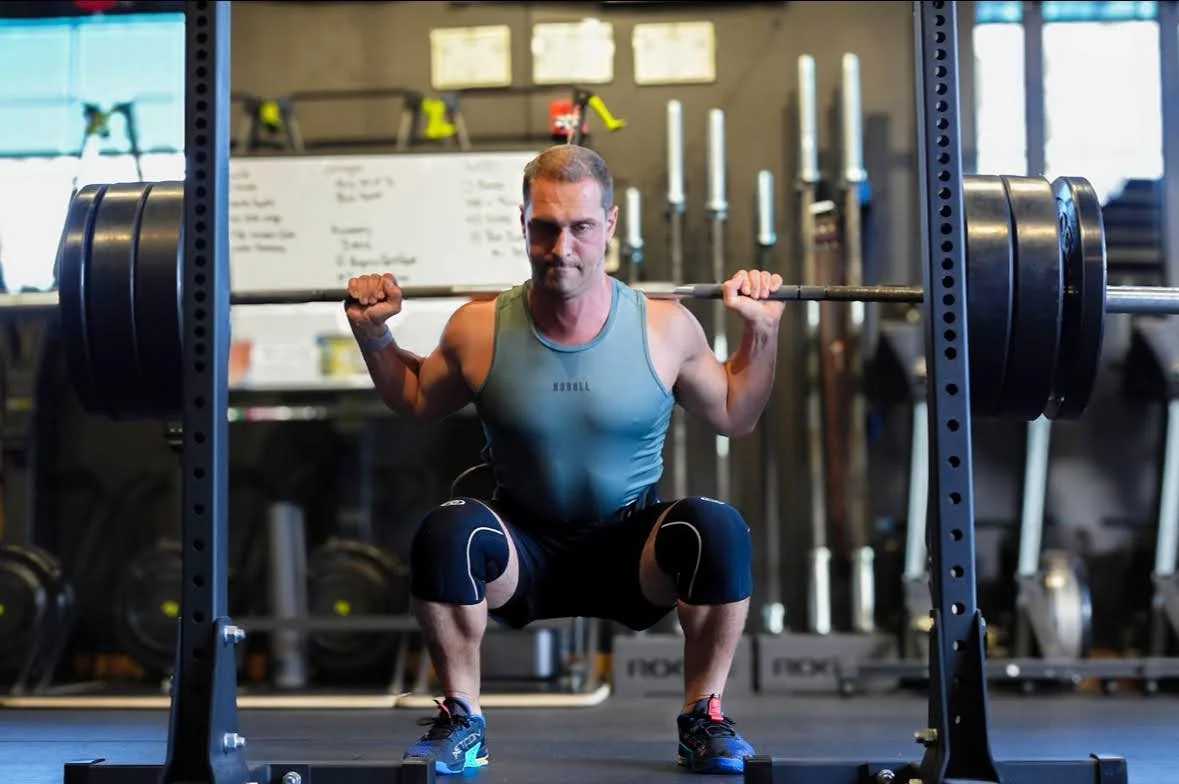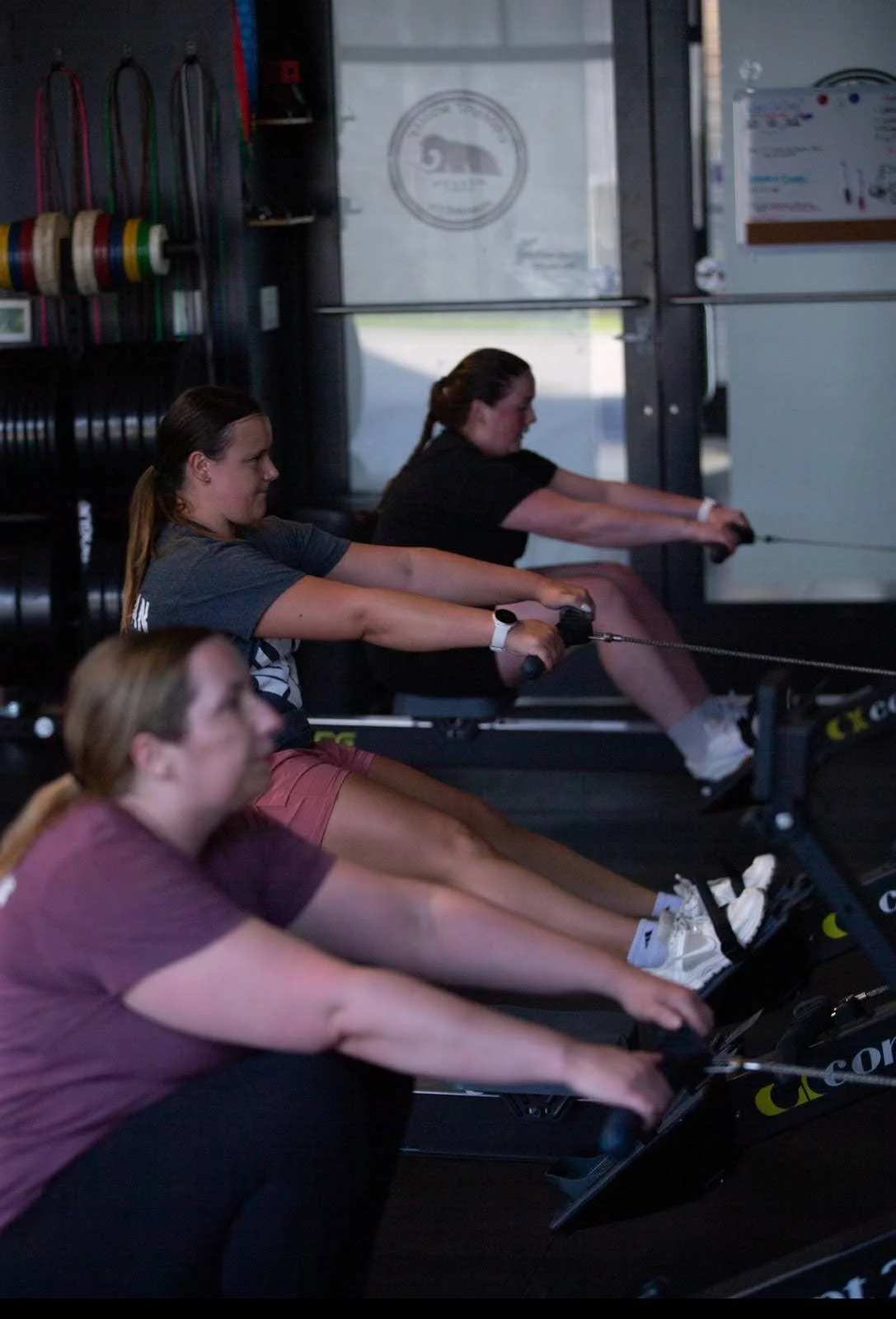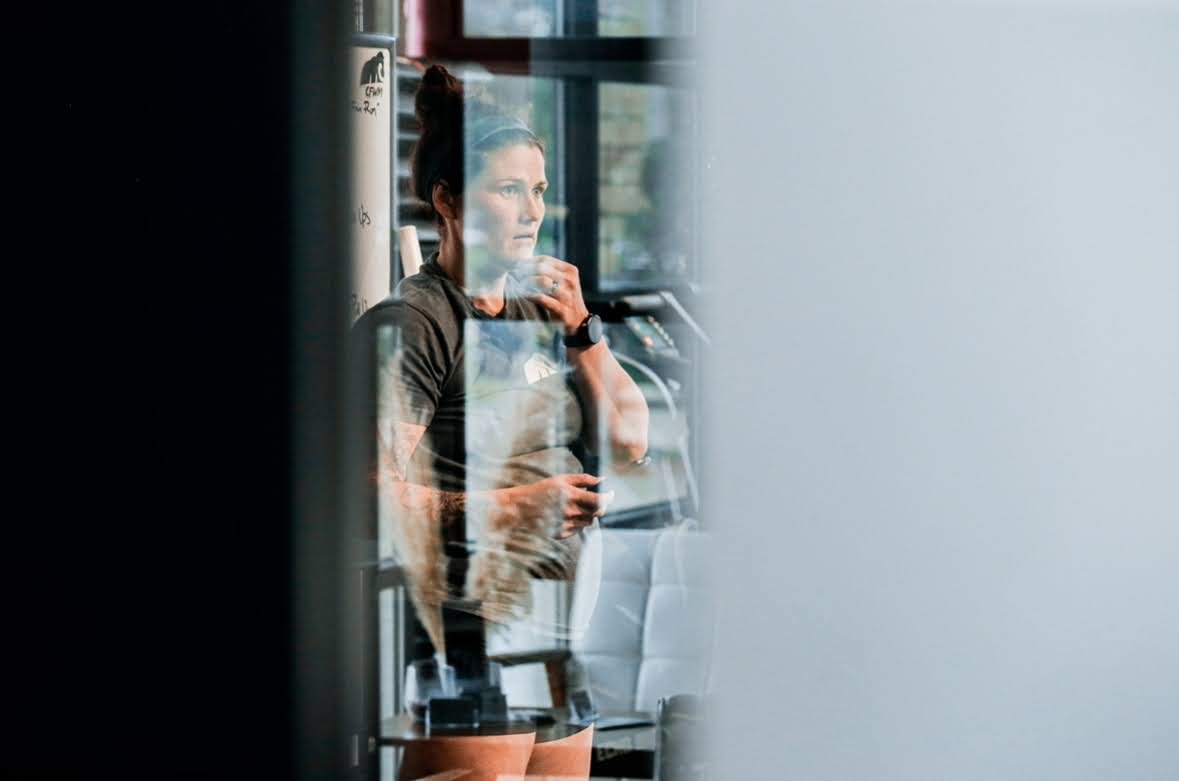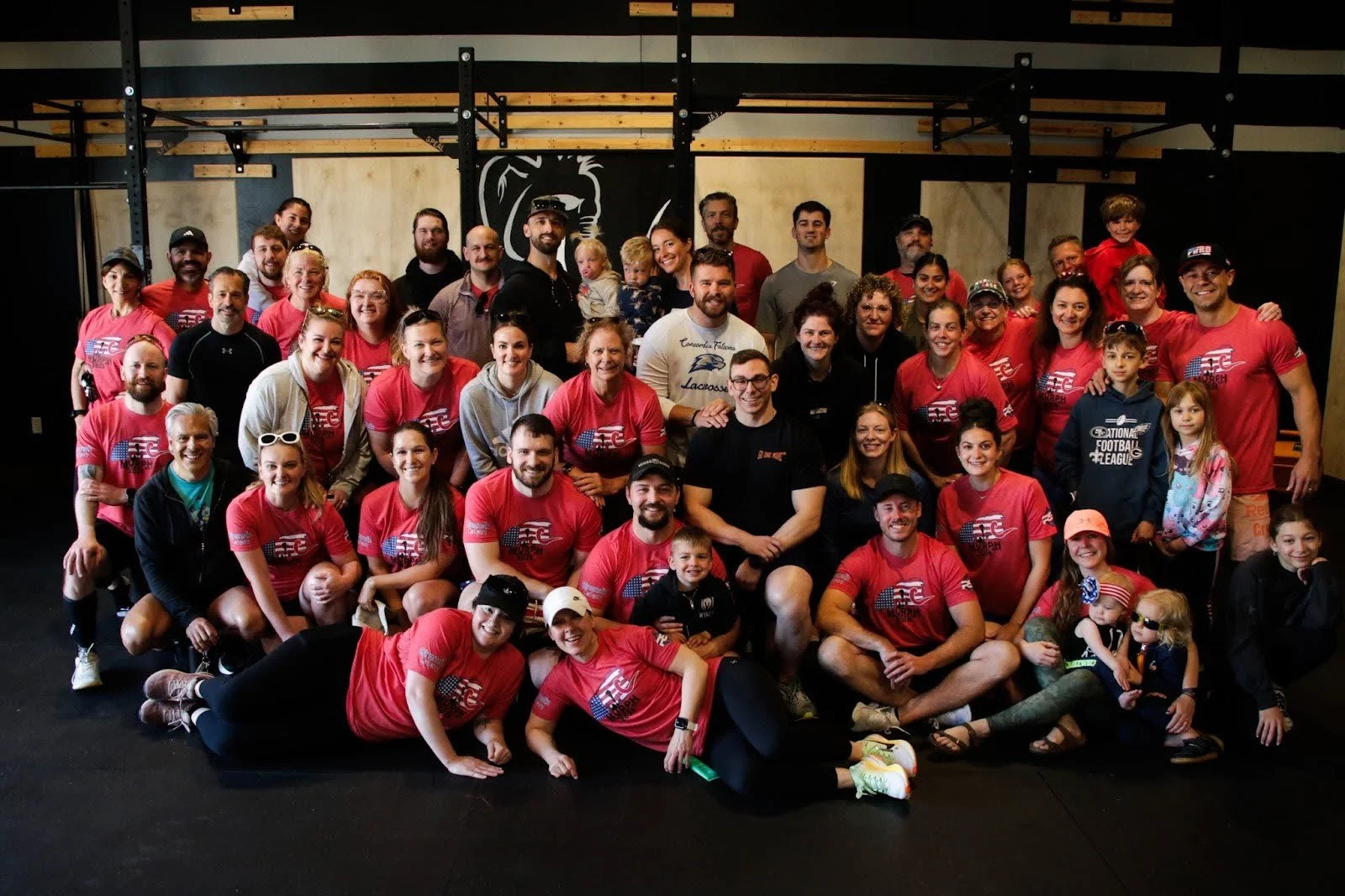Olympic Weightlifting & CrossFit
The snatch and clean & jerk aren’t just Olympic lifts—they’re key to building strength, power, and precision in CrossFit. Here’s why they matter in your training.
Olympic lifting refers to the two lifts contested in the sport of Olympic weightlifting: the snatch and the clean and jerk. These movements involve explosively lifting a barbell from the ground to overhead in one or two motions, requiring a blend of strength, speed, coordination, and mobility. Unlike traditional weight training, Olympic lifts emphasize full-body power and precise technique, making them some of the most dynamic and athletic movements in the fitness world.
CrossFit includes Olympic lifting because it develops skills and benefits that carry over into both training and everyday life. These lifts build strength in the legs, core, and upper body while also improving balance, flexibility, and body awareness. Beyond the physical, they train athletes to be explosive and efficient—qualities that enhance performance in everything from running and jumping to everyday tasks like lifting and carrying. By incorporating Olympic lifts, CrossFit challenges athletes to move with power and precision, helping them unlock a higher level of fitness.
Power Lifting & CrossFit
Powerlifting in CrossFit focuses on the squat, bench press, and deadlift. These lifts build maximum strength that carries over to training and everyday life.
Powerlifting refers to the three foundational strength lifts: the squat, the bench press, and the deadlift. Unlike Olympic lifting, which emphasizes speed and explosiveness, powerlifting focuses on moving heavy loads through controlled ranges of motion. These lifts develop maximum strength in the legs, back, and upper body while teaching athletes how to safely brace, stabilize, and generate force. Because they are straightforward and measurable, powerlifting movements are one of the best ways to track raw strength gains over time.
CrossFit incorporates powerlifting because strength is a cornerstone of functional fitness. Building a stronger squat, press, and deadlift directly improves your ability to perform everything else—whether it’s Olympic lifting, gymnastics, or mono-structural conditioning. Beyond the gym, this strength carries over into daily life, making tasks like lifting, carrying, and moving with confidence much easier. By blending powerlifting with other training methods, CrossFit ensures athletes develop both raw strength and the versatility to apply it in any situation.
Monostructural Conditioning & CrossFit
Monostructural conditioning in CrossFit includes cardio movements like running, rowing, and biking. These build endurance and stamina to support total fitness.
Mono-structural conditioning in CrossFit refers to repetitive, cyclical movements like running, rowing, biking, and skiing. These are often called “cardio” exercises, and they’re designed to build endurance, stamina, and cardiovascular health. Unlike weightlifting or gymnastics, mono-structural work challenges the heart and lungs directly, helping athletes sustain effort for longer periods of time. These movements may seem simple, but they are essential for improving aerobic capacity and overall fitness.
CrossFit emphasizes mono-structural conditioning because it prepares athletes to handle both short bursts of intensity and longer workouts that require pacing. A stronger cardiovascular system not only boosts performance in workouts but also supports recovery, energy levels, and health outside the gym. By combining mono-structural conditioning with strength and skill work, CrossFit ensures athletes develop well-rounded fitness, capable of tackling any challenge—whether it’s running a mile, finishing a high-intensity workout, or just keeping up with the demands of everyday life.
Gymnastics & CrossFit
CrossFit gymnastics focuses on bodyweight movements like pull-ups, dips, and handstands. These skills build strength, control, and mobility that carry over to everyday life.
In CrossFit, gymnastics doesn’t mean tumbling routines or the balance beam—it refers to bodyweight movements that build strength, control, and coordination. Pull-ups, push-ups, dips, handstands, and muscle-ups are all part of the gymnastics category in CrossFit. These movements teach athletes how to move and control their own body through space, developing not only upper body and core strength but also balance, mobility, and awareness. Mastering these skills lays a foundation for athleticism that benefits every other aspect of training.
Gymnastics is included in CrossFit because it helps athletes build functional strength without relying on external weights. Learning how to move your body efficiently translates directly into daily life, whether it’s climbing, carrying, or simply having the mobility to move well as you age. It also creates a powerful balance between strength and skill—reminding athletes that fitness isn’t just about lifting heavy, but about moving with precision and control. By combining gymnastics with weightlifting and conditioning, CrossFit creates well-rounded athletes who are capable of tackling any physical challenge.
REPS FOR MS
At CrossFit Woolly Mammoth, we believe movement is medicine — especially for those living with Multiple Sclerosis. Scalable, functional workouts help improve strength, balance, and endurance, while our supportive community empowers every athlete to keep moving forward. CrossFit offers more than fitness — it’s a pathway to resilience, confidence, and lifelong health.
Multiple Sclerosis (MS) is a chronic condition that affects the central nervous system, often leading to muscle weakness, fatigue, and coordination challenges. While there’s no cure, research consistently shows that regular exercise can help manage symptoms and improve overall quality of life. At CrossFit Woolly Mammoth, we believe movement is medicine — and CrossFit’s combination of functional training, accountability, and community makes it an incredibly powerful tool for those living with MS.
What makes CrossFit so effective is its scalability and focus on functional movement. Every workout can be adjusted to meet individual needs — from modifying weights and reps to choosing movements that build strength safely. The varied, full-body approach helps improve balance, coordination, and endurance, all of which are vital for maintaining independence and stability. Regular training also combats fatigue, enhances mood, and boosts confidence — benefits that go far beyond the gym floor.
Perhaps the greatest advantage comes from the community itself. At CrossFit Woolly Mammoth, no one trains alone. Our members and coaches foster an environment of encouragement and support, helping every athlete — regardless of ability — feel seen, capable, and strong. For those managing MS, CrossFit isn’t about competing; it’s about consistency, empowerment, and progress. Every class is an opportunity to take control, build resilience, and discover what your body is truly capable of.
Take it first hand from one of our athletes here at CFWM.
“CrossFit is great for anyone living with this chronic illness. It combines strength, cardio and functional movements that improve your overall health and well-being. For people with MS, it helps build balance, endurance and everyday strength which are important for maintaining your strength for everyday life. It also offers me a much needed mental escape. The supportive community makes it even more powerful, reminding us that we are stronger together. I'm not sure what I would do without my gym Family.”
Post CrossFit Recovery
Hydration, nutrition, and sleep are the three pillars of recovery. Master them, and you’ll reduce soreness, prevent injury, and make faster progress in CrossFit.
Recovery is just as important as the workout itself, and there are three key things that can make the biggest difference after a CrossFit session: hydration, nutrition, and sleep. First, rehydrating after training helps replace the fluids and electrolytes lost through sweat, keeping your muscles and joints working properly. Next, fueling your body with a balance of protein and carbohydrates within a couple of hours of your workout helps repair muscle tissue and restore energy, so you’re ready to perform again. Finally, prioritizing quality sleep is where the real recovery happens—your body repairs, rebuilds, and adapts during rest, not in the gym.
Together, these three pillars of recovery set the foundation for long-term progress. Skipping them can lead to fatigue, slower gains, and even injury over time. The more consistently you hydrate, eat to recover, and sleep well, the faster your body adapts to the demands of CrossFit. Recovery isn’t just about feeling less sore—it’s about giving your body the tools it needs to come back stronger, day after day
Who is a CrossFit Coach?
CrossFit coaches aren’t just workout leaders—they’re certified professionals who teach safe movement, proper mechanics, and help athletes build strength with confidence.
A CrossFit coach is more than just someone who leads a workout—they are a trained professional dedicated to helping athletes move safely and effectively. Every certified CrossFit coach goes through a rigorous course that covers functional movement, body mechanics, and how to properly teach and scale workouts for different fitness levels. Their job isn’t just to call out reps but to ensure athletes understand how to move correctly, prevent injury, and build strength that translates to everyday life.
What makes CrossFit coaches uniquely qualified is their deep focus on the fundamentals of human movement. They study how the body should squat, press, pull, and hinge in ways that protect the joints and develop long-term fitness. A good coach doesn’t just correct form in the moment—they teach athletes why mechanics matter, creating awareness that carries over beyond the gym. With their knowledge and eye for detail, CrossFit coaches bridge the gap between working out and truly training, guiding athletes to perform at their best while keeping health and safety at the forefront.
For new athletes, it’s important to know that your coach is approachable and there to support you. No question is too small—whether it’s about scaling a movement, modifying for an injury, or simply learning how to hold a barbell correctly. Coaches want you to feel comfortable asking for help, because that’s how you grow and stay safe. They’re not just trainers; they’re partners in your fitness journey, and their goal is to help you build confidence one step at a time.
What’s Needed Before Class One?
Nervous about your first CrossFit class? Learn what to bring, how to prepare, and the right mindset so you can walk in confident and ready for success.
Starting CrossFit is exciting, but walking into your first class prepared can make all the difference. Before stepping through the doors, new athletes should take time to understand the basics—show up a few minutes early, wear athletic shoes with a solid sole and comfortable clothes, also bring water. It’s also a great idea to review any welcome email or information your gym provides so you know what to expect. CrossFit may look intimidating at first, but remember that every movement can be scaled to your current ability. You don’t need to be in peak shape to begin—just a willingness to learn and try.
Equally important is mindset. Go in ready to listen, ask questions, and learn proper technique before worrying about speed or heavy weights. Communicate with your coach about any past injuries or limitations so they can tailor the workout to your needs. Most of all, keep an open mind and embrace the process. The first class is about finding your rhythm, not competing with anyone else. If you show up prepared, stay coachable, and trust the process, you’ll set yourself up for success on your CrossFit journey.
Why Start CrossFit
CrossFit is more than a workout — it’s a lifestyle. At CrossFit Woolly Mammoth in Mequon, WI, you’ll train smarter, push past limits, and find the support of a community that motivates you every step of the way.
CrossFit is more than just a workout—it’s a training method built to improve your overall fitness and lifestyle. With constantly varied movements that combine strength training, conditioning, and functional skills, you’ll find yourself stronger, faster, and more capable in everyday life. Instead of sticking to the same gym routine, CrossFit challenges your body in new ways, ensuring you never plateau and always have something to work toward. Whether you want to lose weight, build muscle, or simply feel healthier, the program adapts to any fitness level and goal. But ultimately is a style of fitness for those looking to challenge themselves and try new things!
What makes CrossFit truly unique, though, is the community. Every workout is done in a supportive group setting where encouragement and accountability thrive. You’re not just lifting weights or sweating through a workout—you’re building relationships, pushing past limits, and celebrating progress together. That energy and camaraderie keep people showing up day after day, transforming fitness from a chore into a lifestyle. If you’re ready to step outside your comfort zone and discover your full potential, CrossFit Woolly Mammoth is the perfect place to start this journey.


















